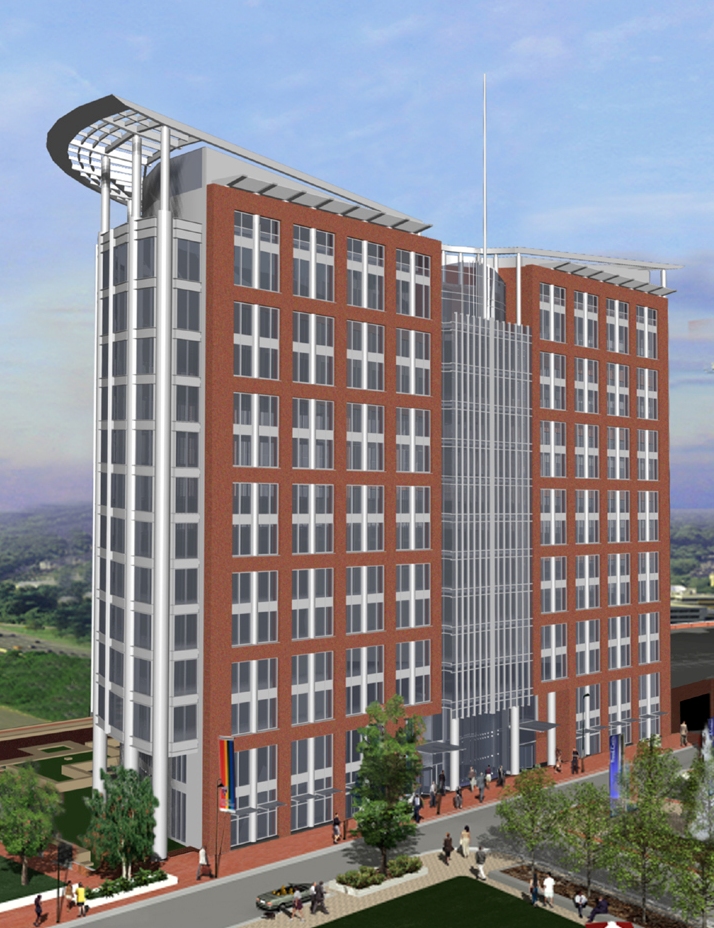Thesis Proposal
Towers Crescent Building F: Floor, Lateral System, and Foundation Optimization
Towers Crescent Building F is a 230’ speculative office building containing 5 levels of parking and 15 floors of offices. The foundation is auger cast piles. The gravity system is a reinforced concrete flat slab with drop panels and drop bands framing into reinforced concrete columns. The lateral system is a combination of reinforced concrete shear walls, and the moment resisting frames created by the monolithically cast columns and slab. The slab acts as a rigid diaphragm and distributes lateral load to the lateral load resisting elements according to stiffness.
This building was never built according to its original design due to certain expensive structural features, such as curved drop bands and the pile foundation system. Materials costs would also have been high due to the large volume of concrete in the slab. Also, based on simple lateral analysis procedures the lateral system was determined to be insufficient to bear the calculated seismic loads.
Because of these problems, the floor system will be redesigned as a two way pre-stressed slab with supporting edge beams. This will simplify the required formwork, reduce materials costs, and contribute to lateral stiffness. Next, seismic loads will have to be reduced through more rigorous analysis procedures. The stiffness of the lateral system will also have to be determined more accurately. These analyses will involve construction of a 3-dimensional model. Once they are complete I will make changes to the lateral system to increase its strength and efficiency. Lastly, the pile foundation system will be replaced with caissons. Once the redesign is complete, I will estimate the cost of construction of one floor using the original design compared to my design.
Breadth: As stated in the proposal, I will determine the required plenum depth for mechanical systems. Next, I will estimate the cost of building a typical tower floor, including formwork, reinforcement, and concrete placement, using the original design and my pre-stressed design, and compare the two.
